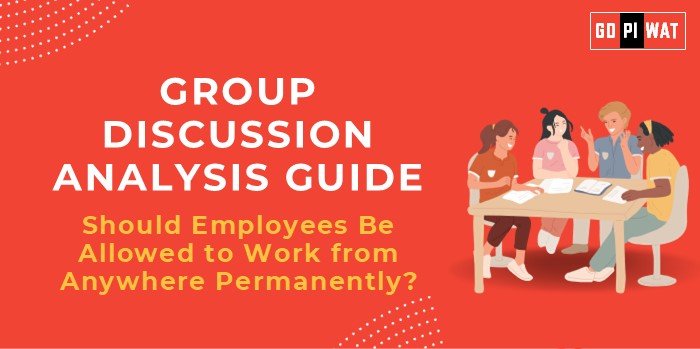📋 Should Employees Be Allowed to Work from Anywhere Permanently?
🌐 Introduction to the Topic
Opening Context: The COVID-19 pandemic significantly accelerated the adoption of remote work, proving its viability and productivity for numerous roles and industries. However, the idea of allowing employees to work from anywhere (WFA) permanently remains a debated issue among businesses and policymakers.
Topic Background: With the proliferation of digital tools and improved internet connectivity, organizations worldwide are reimagining traditional workplace models. Permanent WFA policies have sparked discussions on flexibility, talent access, and challenges like cybersecurity and workplace cohesion.
📊 Quick Facts and Key Statistics
- 📈 Remote Work Productivity: A 2023 Microsoft report found that 87% of employees feel more productive while working remotely.
- 🌍 Global Adoption: 58% of organizations globally adopted hybrid or remote work models post-pandemic.
- 🤝 Access to Talent: LinkedIn reported a 20% increase in cross-border hiring in 2023.
- 🔒 Cybersecurity Threats: Remote work contributed to a 50% rise in cybersecurity incidents from 2020-2023 (IBM).
- 😊 Employee Preferences: 73% of workers prefer flexible work options over traditional office setups (McKinsey, 2024).
👥 Stakeholders and Their Roles
- 👩💼 Employees: Advocates for flexibility, better work-life balance, and reduced commute times.
- 🏢 Employers: Must balance productivity, data security, and company culture.
- 🏛️ Governments: Responsible for framing policies ensuring fair labor practices, tax compliance, and data protection.
- 💻 Technology Providers: Enabling tools for secure and seamless collaboration.
- 🌆 Local Economies: Impacted by decreased demand for office spaces and related industries.
🏆 Achievements and Challenges
🌟 Achievements:
- ✅ Enhanced Productivity: Case studies from companies like GitLab and Spotify show increased employee satisfaction and output.
- 💰 Cost Savings: Reduced overhead costs, with major firms saving millions on office leases.
- 🌍 Diverse Talent Pool: Companies now hire from a global talent base.
⚠️ Challenges:
- 🔒 Cybersecurity Risks: Remote networks are vulnerable to breaches.
- 🤝 Collaboration Issues: Teams may face communication and alignment hurdles.
- 📉 Economic Impact: Decline in urban office usage affecting businesses and real estate markets.
🌍 Global Comparisons:
- ✅ Success: Estonia adopted a WFA policy supported by robust digital infrastructure.
- ❌ Challenges: Japan struggles with remote work due to cultural preferences for in-office settings.
📖 Case Study:
- 📊 Salesforce: Embraced a flexible work model, reducing its office footprint by 50% while maintaining a 9.2/10 employee satisfaction rating.
🗨️ Structured Arguments for Discussion
- ✔️ Supporting Stance: “Permanent WFA policies enhance employee productivity and satisfaction while reducing costs for businesses.”
- ❌ Opposing Stance: “Work-from-anywhere policies jeopardize cybersecurity and team collaboration, creating potential long-term inefficiencies.”
- ⚖️ Balanced Perspective: “While WFA offers clear benefits, robust systems and policies must address security, equity, and cohesion challenges.”
💡 Effective Discussion Approaches
- 📊 Opening Approaches:
- “With 73% of employees favoring remote work, organizations must decide between flexibility and operational cohesion.”
- “Cyberattacks on remote networks surged 50% during the pandemic, raising critical questions about WFA security.”
- 🛡️ Counter-Argument Handling:Use examples like Estonia’s success in addressing digital security and Salesforce’s flexible policies.
📈 Strategic Analysis of Strengths and Weaknesses
✅ Strengths:
- 😊 Improved work-life balance.
- 💰 Lower costs for companies.
❌ Weaknesses:
- 🔒 Data security vulnerabilities.
- 🤝 Decreased team engagement.
🌟 Opportunities:
- 🌍 Attracting diverse talent globally.
- 💻 Leveraging advanced digital collaboration tools.
⚠️ Threats:
- 📉 Economic shifts in urban business hubs.
- 🤝 Increased competition for top-tier talent globally.
🎓 Connecting with B-School Applications
- 📂 Real-World Applications: Examining the impact of WFA on operations and team management in MBA projects or case competitions.
- 💬 Sample Interview Questions:
- “How should organizations mitigate cybersecurity risks in a WFA model?”
- “What economic implications could permanent remote work have on urban centers?”
- 📚 Insights for B-School Students:
- Learn to navigate digital tools, manage virtual teams, and understand tax implications for cross-border employment.


